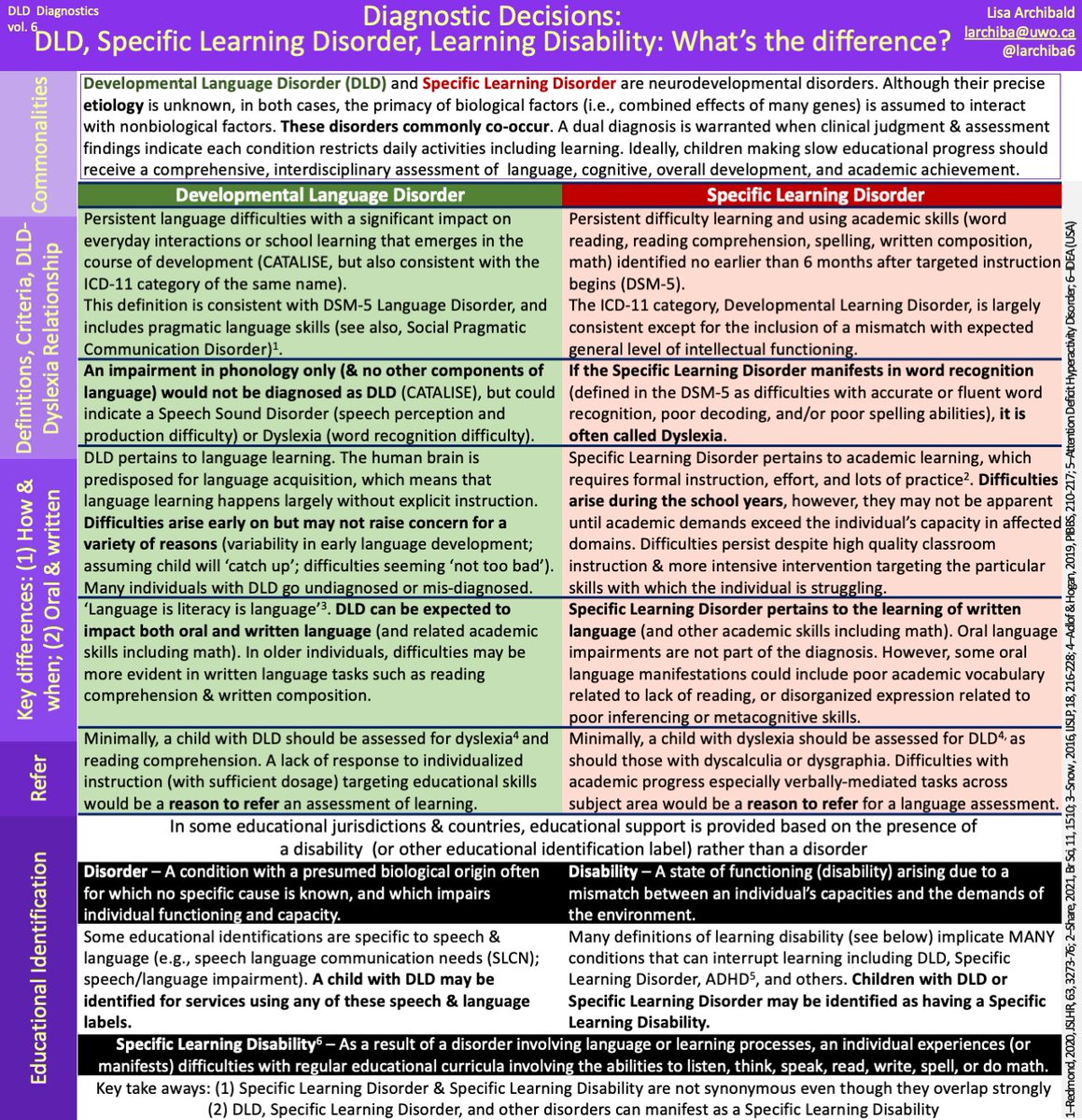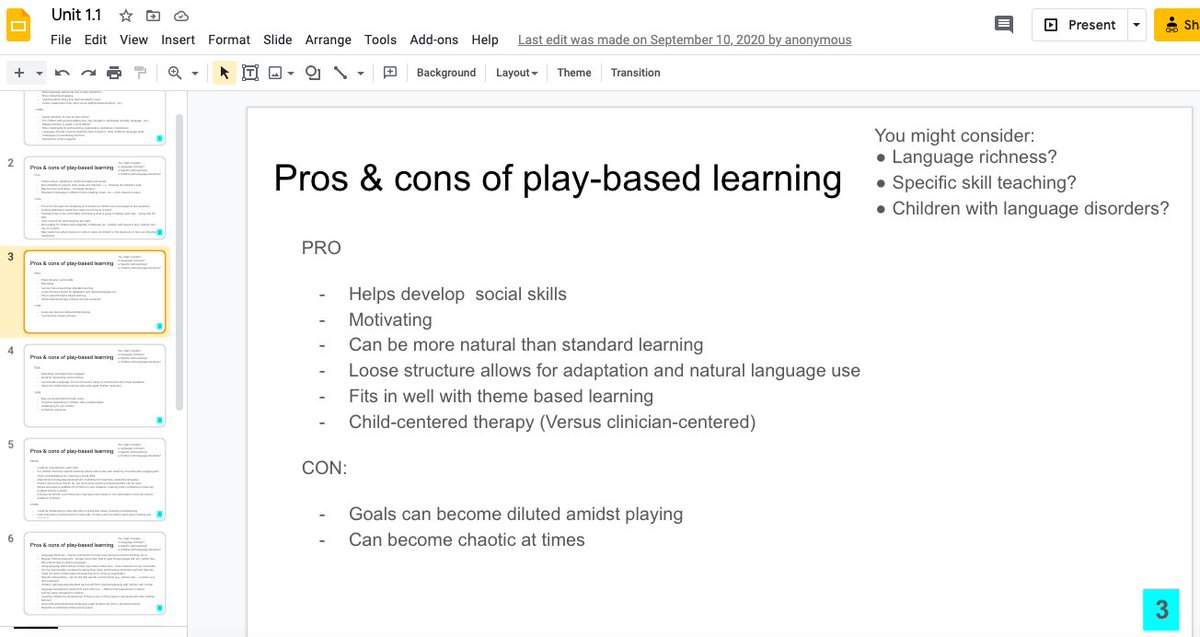Its Family Day in Canada so I'm sharing volume 6 of the DLD Diagnostics Toolbox with my global #DevLangDis family. It addresses questions related to diagnoses & labels used by SLPs/SaLTs & educational psychologists to describe children with language and/or learning difficulties. 

Please be sure to read the full blog with this volume. It's the longest yet because there's lots to discuss here! uwo.ca/fhs/lwm/news/2… #DLDToolbox
Volume 6 was challenging because the terms are used differently across educational jurisdictions & countries. Be sure to check definitions of (Specific) Learning Disability and the way the terms are used in your system. #DLDToolbox 

I’ll be highlighting aspects of the volume over the week here and on Instagram @dld_diagnostics. #DLDToolbox
First up in volume 6 is a comparison of #DevLangDis and Specific Learning Disorder. DLD is a problem with language (oral or written), which is learned largely implicitly. #DLDToolbox 

☝️ Specific Learning Disorder is a problem with academic learning (reading, writing, math) in response to formal, explicit instruction. Oral language is not part of the diagnosis, although manifestations in oral language could occur related to the academic struggles. #DLDToolbox
Both #DevLangDis & Specific Learning Disorder will impact school learning across curricular subjects, DLD because language is a part of all school learning. Ideally, an interdisciplinary assessment would provide the best understanding of a child’s learning challenges. #DLDToolbox 

Poor academic progress is a reason to refer for a language assessment. Poor progress despite individualized, intensive, targeted instruction adjusted for the child’s language level is a reason to refer for a learning assessment. #DLDToolbox 

#DevLangDis and Specific Learning Disorder also commonly co-occur. Take, for example, DLD and Dyslexia. #DLDToolbox 

See this excerpt from the DSM-5 on the co-occurrence of #DevLangDis and Specific Learning Disorder. #DLDToolbox
https://twitter.com/larchiba6/status/1458128260529786887
Specific Learning Disorder (DSM) & Specific Learning Disability (IDEA) aren't synonymous even though they’re often used interchangeably. The disorder refers to a condition with a presumed biological origin. It may not be apparent until academic demands exceed capacity #DLDToolbox 

• • •
Missing some Tweet in this thread? You can try to
force a refresh











